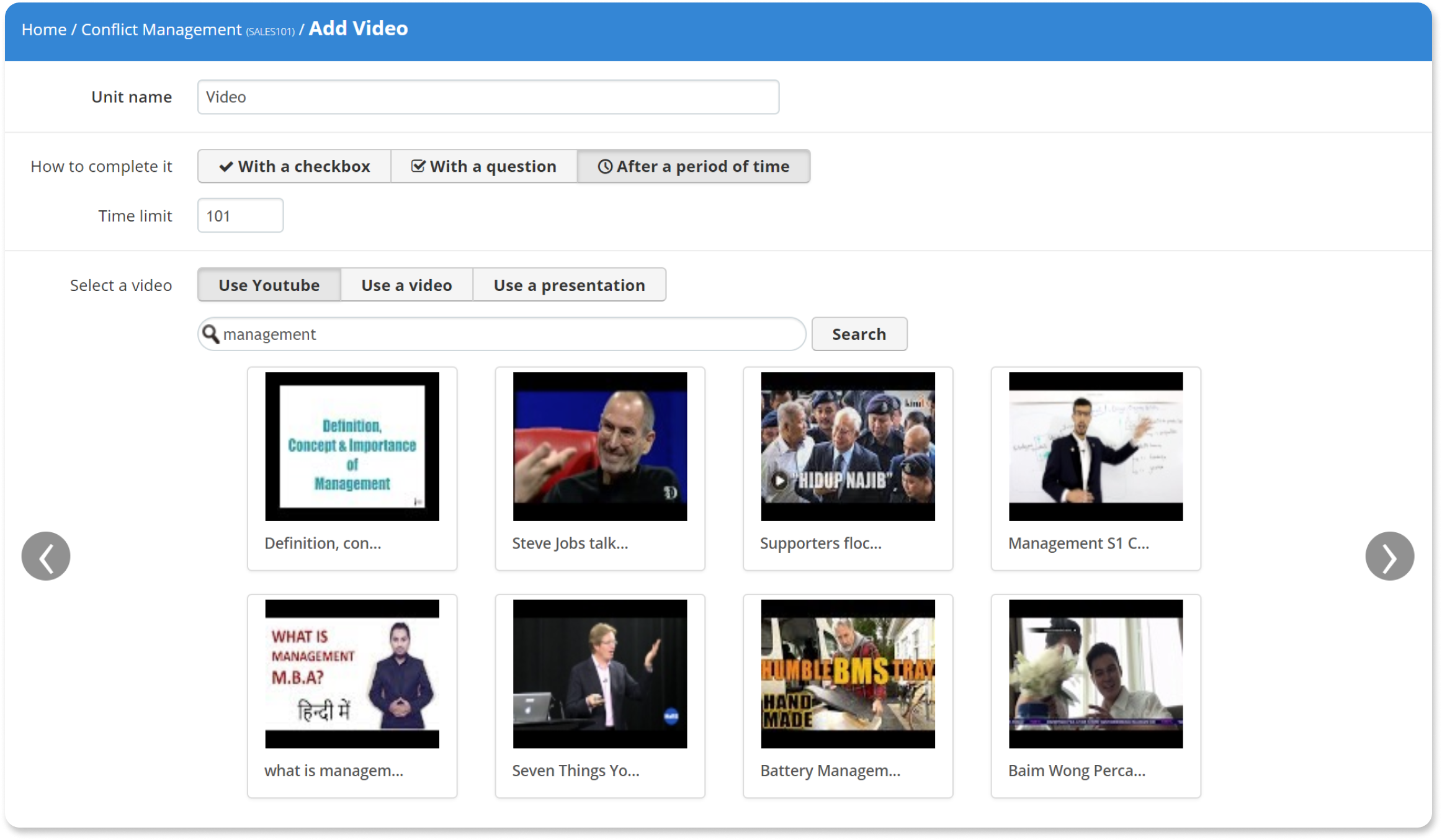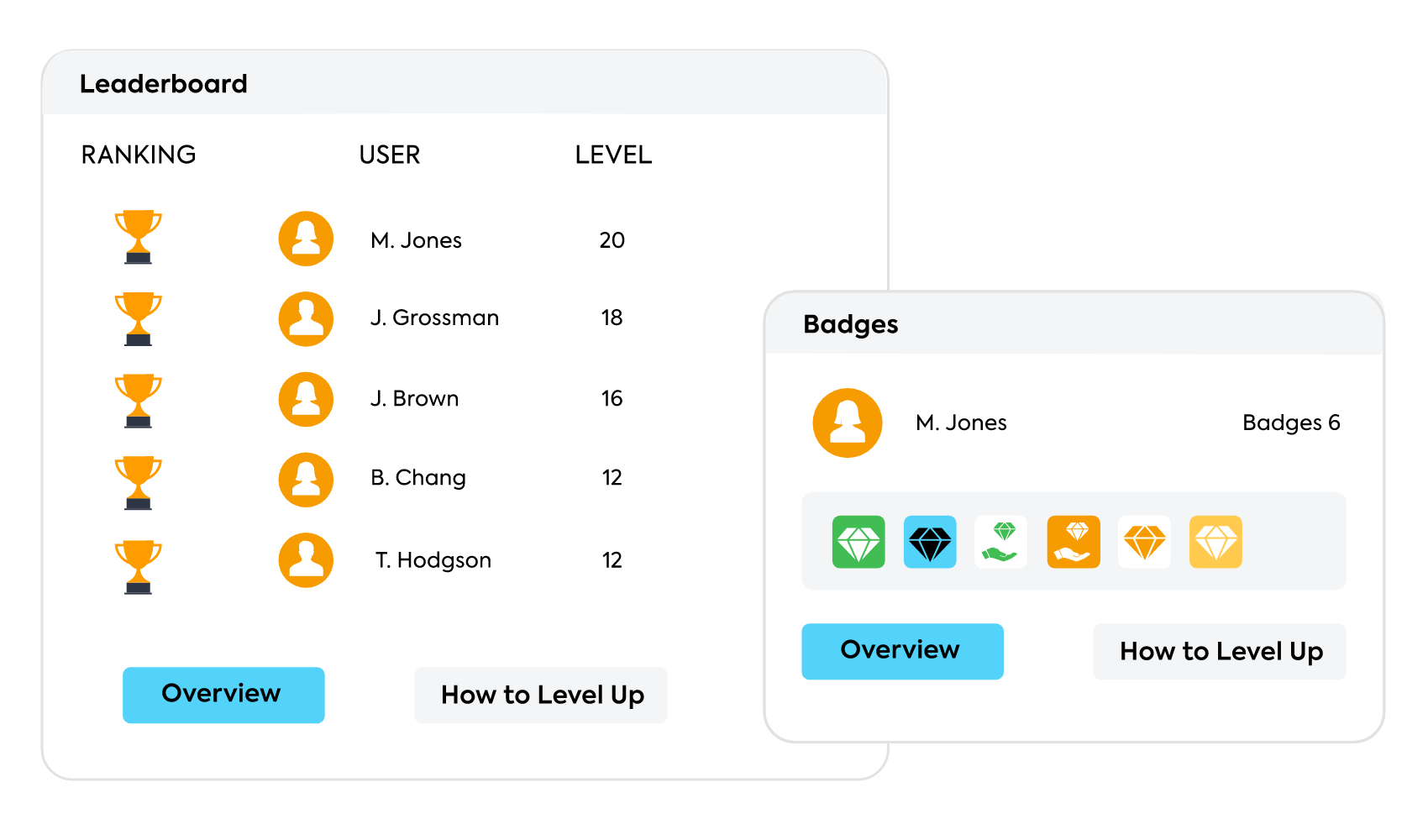To teach someone anything, you first got to get their attention. That’s often a tall order these days when the average attention span of an adult can be less than 10 seconds. In this post, we’ll teach you how to expand your learners’ attention span and create engaging training.
Can I have your attention? 11 tips to create engaging training
We live in the era of a short attention span. Once we used to read books, now we skim and surf the web. Even reading a blog can be too much work for younger audiences: they’d rather entertain themselves with Twitter, Instagram, and short online videos.
Modern technology is affecting our attention spans. According to a (somewhat controversial) study conducted by Microsoft a few years ago, the attention span of the average American has dropped to just 8 seconds long.
How to lose 40 pounds in a single week
No, we aren’t going to offer any dietary advice. We just used an exciting title to fight against our readers’ low attention spans and ensure that we still have your attention.
What we are going to offer you, though, is a list of 11 surefire tips to help you grab your learners’ short attention span―and keep it.

Why does it matter so much?
“Online learning is a bit like dinner parties. When they are boring, people tend to interact less and leave early.” according to an eBook by TalentLMS on learner performance and engagement.
Whether it’s in a traditional or virtual setting, training should be engaging by all means. You need to make sure you have the attention of the learners focused on the training so that the knowledge transfer is seamless. Engaged learners are bound to perform better in the course.
Sometimes it can be hard to engage learners in virtual training. And this is why you must think proactively about it. For instance, remote learners might be distracted by their surroundings during training—a barking dog, noise from the street, busy setting, poor internet connection, a phone call, you name it.
There’s also lack of interactivity due to the absence of spontaneity. In a traditional setting, learners seem to interact more with the instructor by asking questions, sharing their perspective, or participating in discussions but in the virtual environment it’s frequent that they mute their microphone, turn their camera off, and sit back while listening passively to the instructor sharing the course material.
You’ve probably invested a lot of time, effort, and resources into your training. So it really does matter that you pay attention to how to build even more engaging training programs.
Can’t be bothered to read through the whole post? Just read our index below, and jump straight to the ones that you want to try:
1. Keep your courses to the point
2. Keep your texts short
3. Keep it simple
4. Get the typography right
5. Add multimedia
6. Embrace new technologies
7. Go mobile
8. Go micro
9. Go live (with Instructor-led training)
10. Make it a game
11. Make it entertaining
Still with us? You’re an attention champ. Here are 11 excellent tips as a reward for your persistence:
1. Keep your courses to the point
Nothing will bore your learners faster than off-topic material. They’re following your course to learn something specific, so focus your content on giving them just that.
If the theory behind a subject is not needed, skip it. Your goal is to train busy adults, perhaps employees, not university students. In general, avoid irrelevant asides and go straight into the heart of the matter to beat a short attention span.
Focus your virtual training sessions to exactly what the training is about. Nothing more, nothing less. Get to the good part right from the start and watch your learners being eager to participate and engage with the training material.
2. Keep your texts short
If being on-topic is the first rule for creating engaging training content, being succinct is the second. In other words, when you create online courses, you should keep your content both on-topic and brief. A shorter text is less intimidating and easier to follow.
Keep your courses as brief as possible. Skip unnecessary introductory notes and remove extra flourishes.
Don’t explain the same thing with different examples. Use a single example and express it as better as you can.
There’s no use in blabbering about a single point or topic during virtual training. When asking yourself how to make virtual training more engaging, you should take into account that learners won’t be focused on the screen for long. Break it down into smaller chunks, and you’re good to go!
3. Keep it simple
This tip, along with the previous two, are the three golden rules that you need to follow in any type of training content when you want to fight a short attention span: Keep it to the point, keep it short, and keep it simple.
Keeping it simple means that your training content should match the background and skill level of your learners.
The point is not in showing off how well the content writer knows a subject, but in providing just the amount of knowledge that your learners need.
Build and deliver engaging courses in minutes with TalentLMS
The training platform that users consistently rank #1.
Easy to set up, easy to use, easy to customize.

4. Get the typography right
Illegible text is very off-putting for learners, especially in the virtual training environment. So please ensure that your course’s typography is the one it should be. This means, among other things:
- having good contrast between the text and the background
- using a font that’s appropriate for longer passages
- setting the right font size
- adjusting the line height and width of your text
5. Add multimedia
Video, audio, and images are great ways to enrich your content and grab your learners’ attention with engaging training courses. Provided, of course, that you pick the right video, audio, and image content.
Nice, relevant illustrations, for example, can engage learners and even help them understand a lesson better. Boring stock photos they’ve seen 100s of times already, not so much.
The same goes for eLearning videos. A video of an expert standing in front of a whiteboard and talking will only bore your learners.

Remember that just because you’ve added a video to your course, doesn’t mean you’ve made it more exciting. An engaging eLearning video should have relevant content, high production value, and entertaining content.
6. Embrace new technologies
To take your training content beyond today’s multimedia options, try and embrace new technologies. This includes formats like VR, a technology that has gotten quite accessible, and which you can leverage to create very engaging and immersive learning experiences.
Same goes for 360-degree videos. They have been trending for over a year now, and offer a simple way to go beyond ordinary video and give the viewer control of the whole scene.
Generally, keep an eye for new and emerging technologies, and, when possible, embrace them early in your training. Innovation is a good way to hook learners and increase their short attention span.
7. Go mobile
Your content should be available wherever and whenever your learners have some spare time to learn. This means that it has to be available on mobile.
This way they can use it on their daily work commute, while visiting a customer, at a cafe, or really anywhere they feel like learning.
If your training content isn’t accessible from their smartphones, your learners will just divert their attention to something else that is—a casual game, a social network service, or some cat video.
To have a fair chance of competing with these diversions, have your training accessible through a native mobile eLearning app that talks directly to your LMS. (Old-school web access through the phone’s browser doesn’t cut it anymore.)
8. Go micro
Their smartphone commands several hours of your learners’ attention throughout each day, so having your content there can tremendously help with engagement.
A smartphone isn’t appropriate for long content and extended periods of study, though.
To combat that, embrace microlearning. That is, convert your content into small, bite-sized chunks that your learners can easily consume, even on a five-minute coffee break.
Meet TalentLibrary™
A growing collection of bite-sized, ready-made courses that cover the skills
your teams need for success at work
![]()

9. Go live
While static content (text, multimedia, etc.) can be the foundation of your training, to really grab your learners’ attention, you should go live. For example, if training occurs in a traditional setting, you could arrange for some classroom-based training sessions, where your learners have a chance to meet and discuss with their instructor and each other.
Or you should schedule some online instructor-led training sessions or webinars, and take advantage of tools like teleconference, screen sharing, and virtual whiteboards for your virtual training sessions.
All in all, interaction, whether in-person or online, requires learners to participate, and therefore, increases their short attention span.
10. Make it a game
From the lowly leaderboard to elaborate levels and scoring schemes, the gaming industry has pioneered many ways of grabbing a user’s attention to keep them addicted to a game. In fact, in our 2018 Gamification at work survey, we found that 85% of employees would spend more time on software that was gamified.
You can take advantage of this by turning on your LMS’ gamification features. A little competition between learners can do wonders for boosting engagement and increasing their online attention span in virtual settings.

Looking for an eLearning platform to boost employee engagement?
Take advantage of gamification features with TalentLMS.
The training platform that users consistently rank #1.
11. Make it entertaining
Last but not least, if you want to build truly engaging training courses, don’t forget to give your content and your ILT sessions a touch of humor.
Learning doesn’t have to be a dry experience. A sprinkle of fun can help grab the learners’ attention and boost their engagement levels.
You don’t even have to make the jokes yourself—you could, for example, embed some existing webcomics, videos, podcasts, or funny illustrations into your course.
Making (online) learning stick
Grabbing your learner’s attention is not easy. And, more specifically, in the virtual world.
If you’re wondering how to deal with a short attention span, our tips offer some tried and true ways to grab learners’ attention. You can, of course, mix and match to best fit your content and virtual training program.
A good LMS platform with the features needed to implement our suggestions will come in handy too. So, why wait? Try our suggestions for engaging training programs in a full-featured learning environment.
Originally published on: 30 Jul 2018



